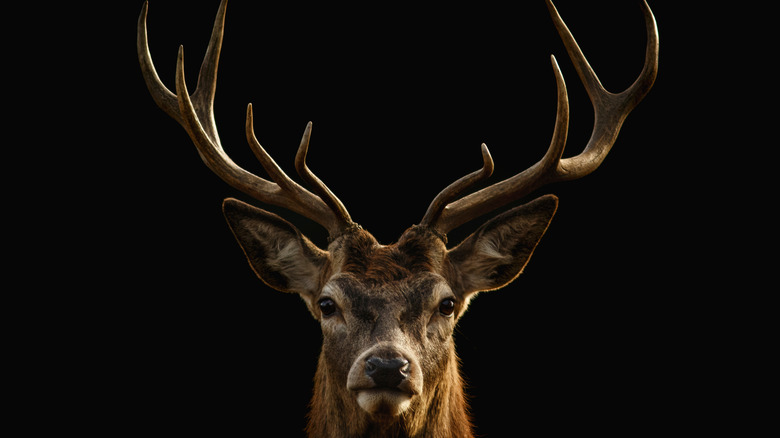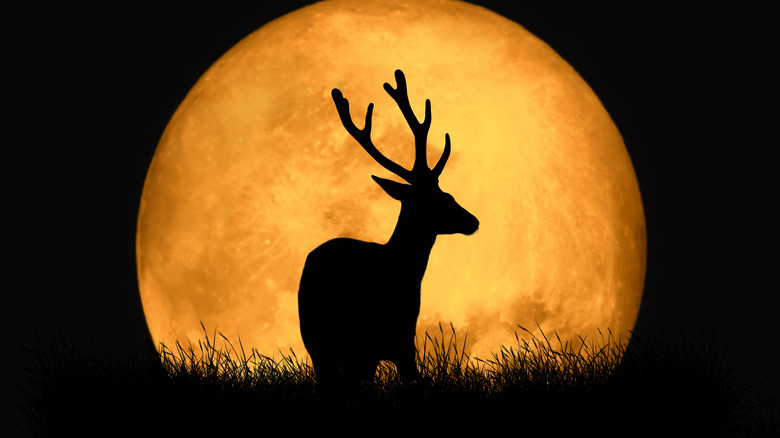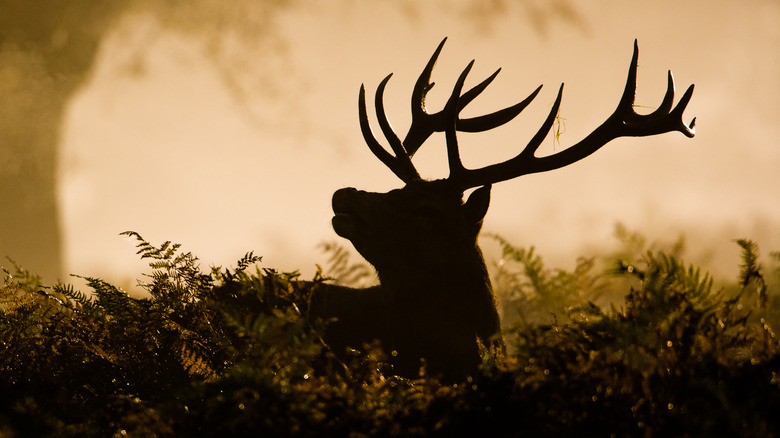What Is The Buck Moon?
For millennia, mankind has wondered at the full moon, or the point in the orbit when Earth's closest neighbor, the moon, is completely illuminated by sunlight. Three or four times a year, though, something called supermoons happen, which raise the stakes on the spectacle when, for an even bigger and brighter show, the moon is not only full but also at the closest point in the satellite's elliptical orbit around the Earth, as Natural History Museum explains. Humans all over the world have noticed these astronomical events, and we've not only given them names, we've also used them to help track nature's patterns.
Some indigenous North American tribes, for example, refer to the June supermoon as a "Strawberry Moon." The moon at that time not only appears red or pink in hue as it hugs the horizon, that's also the time of year in the northern hemisphere when strawberries are ready to harvest, as The Old Farmer's Almanac writes. Some cultures call it the "Hot Moon," for the beginning of summer heat, while some Europeans named the June supermoon "Rose Moon," according to Royal Museums Greenwich. Another annual supermoon each July is the "Buck Moon," and like the "Strawberry Moon," the "Buck Moon" got its name from another of nature's cycles.
The name Buck Moon comes from the Algonquin people
According to BBC News, the name "Buck Moon" applied to the July supermoon comes from the Algonquin people, which in pre-colonial times populated what is now the Northeastern United States, sharing a similar language, as Britannica explains. In certain areas of Europe, as BBC News goes on to note, the July supermoon is called a "Hay Moon" to mark the beginning of haying season, while among certain Hindu, Buddhist, and Jainist cultures it's called a "Guru Moon," with religious significance for those populations.
For the Algonquin people, the "Buck Moon" was used to mark the time in the year when antlers begin to emerge on buck deer, which at first are soft and velvety but over time harden, shed, and regrow during breeding season, according to the National Deer Association. The emergence of antlers on bucks marks the beginning of the maturity cycle, and by fall, the bucks are considered ready to hunt and kill. According to Roanoke Festival Island Park, the Algonquin people are noted bowhunters for especially deer, and all parts of the animal were harvested not just for food, but for bow-making, tools, clothing, and shelter.
In 2022, the Buck Moon was also the closest the moon came to Earth
Though it happens at a different time each year, in 2022 the "Buck Moon" was also the point when the moon came closest to Earth in its orbit making it the biggest and brightest supermoon of the year, as The Old Farmer's Almanac writes. That point in the moon's monthly cycle when it comes closest to Earth is also called the "perigee," according to Time and Date. That combination of a supermoon and a perigee can make for quite a sight.
As The Old Farmer's Almanac goes on to note, "Buck," "Hay," and "Guru," are also just three of the many names given to the mid-summer supermoon. For the Cree people in Eastern Canada the "Buck Moon" is called the "Feather Moulting Moon," and for the Tlingit in what is now the Pacific Northwestern United States, the July supermoon is called "Salmon Moon," when salmon return to the area for breeding in plentiful numbers for harvesting. Meanwhile, many other native populations had different names for the July supermoon, such as Berry Moon, Thunder Moon, and Month of the Ripe Corn Moon.


